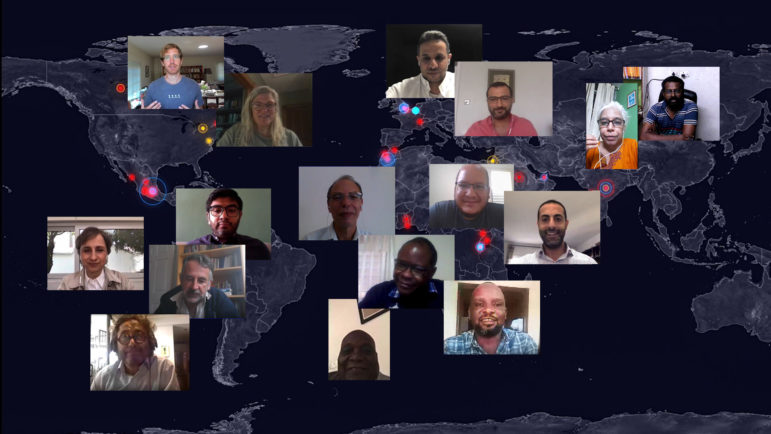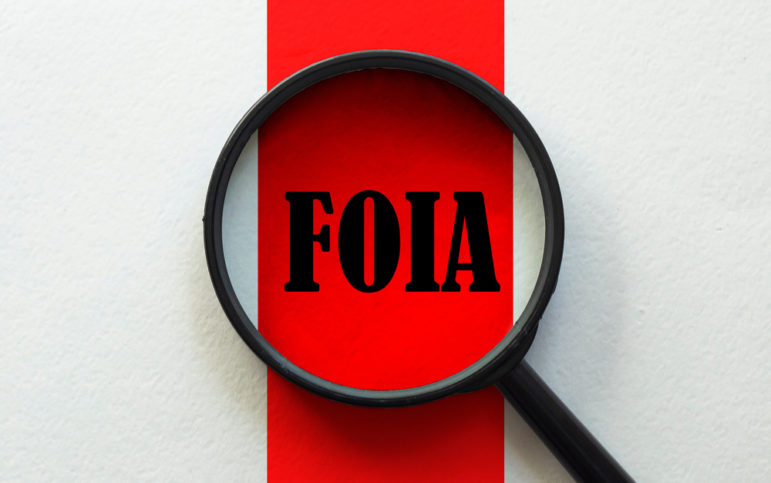

Photo: Unsplash
Law as Source: How Investigative Journalists Can Superpower Their Reporting

Photo: Unsplash
Deep-dive investigative projects are not handed to journalists on a plate. Media outlets have to commit significant resources to investigate, often in the face of opposition by the subjects of investigation. When left to its own resources, a financially strained media group can have a hard time holding the powerful to account. So, how do we get effective investigations, then? A large part of the answer is the legal system.
In a new study, titled Law as Source, I show that court documents, depositions, and regulatory reports are often the most instrumental sources of accountability journalism. To illustrate, when I looked at Pulitzer Prize-winning pieces from the past 20 years, I discovered that legal documents played a crucial role in over half of these paradigmatic cases of investigative journalism. While the Pulitzer focuses on American journalism, the basic dynamics apply across the globe. The upshot is that the law not only regulates what the media can or cannot say, but also facilitates media scrutiny by producing information.
Take “Spotlight,” which won the 2015 Oscar for Best Picture. “Spotlight” was billed as a movie about investigative reporters holding the Catholic Church to account over child sex abuse. But the reporters could not have done it alone. The legal system helped them. The Boston Globe reporters managed to spot the pattern of abuse by looking at the numbers of lawsuits filed against individual priests. They revealed the cover-up by getting internal Church documents from motions attached to court files. “Spotlight” is therefore not really a story about investigative journalism holding the powerful to account. It is rather a story about interactions between the media and the courts. The interactions are what produced accountability.
Without the legal system generating information in the process of pursuing individual lawsuits against priests, the reporters would not have had such a powerful story to tell. And without the reporters putting the pieces of the puzzle together, identifying the pattern, packaging it compellingly, and diffusing it widely, the Church would not have publicly admitted its mistakes and committed to changing its behavior. The legal system would probably have continued settling and sealing one individual case after another. It took media scrutiny to move the needle. Effective law enforcement led to effective journalistic scrutiny and vice versa — a virtuous cycle.
To understand how and how much investigative reporters rely on legal sources, I analyzed the content of projects that won investigative reporting prizes in the past two decades; interviewed 40 prizewinning reporters; scoured a reporters-only database of tipsheets and how-to manuals; and went over syllabi of investigative reporting courses in the leading communications schools. The triangulation of these methods produced the following four sets of insights.
1. Useful Information
The first question is where to find useful information. The legal system produces information in two separate ways. It produces information directly, as in Freedom of Information laws and disclosure requirements. It also produces information indirectly as a by-product of law enforcement actions. Think, for example, of internal emails made public during the discovery stage of a trial, or a detailed regulatory investigation report exposing a rotten organizational culture. Counterintuitively, the study reveals that indirect legal sources (litigation or regulatory investigations) are often more useful for investigative reporters than direct legal sources.
While direct sourcing channels rely on powerful players volunteering information, indirect sourcing channels rely on forcing information out of them. This fundamental difference can make information extracted during litigation/regulatory investigation more conducive to the work of investigative journalists trying to understand how the powerful behaved, relative to information selectively released by the powerful themselves.
Take, for example, Newsday’s 1995 Pulitzer-winning project on abuse of disability pension funds by police officers. When the reporters got an initial tip that the system was rigged, they filed a FOIA request for all the documents related to how disability funds were allocated. Yet all the reporters got back were the names and social security numbers of the officers receiving the funds, without further details. Instead of relying on the direct sourcing channel, the reporters had to find indirect, creative ways to dig up information. They searched the court dockets for litigation involving individual officers and managed to piece the puzzle together.
2. Legal Information
A second question concerns the role that legal information plays in your reporting — the distinction between producing new information and helping you translate existing information into a compelling story. Law enforcement actions help investigative journalists by uncovering information to which they were not privy. In the US, for example, the process of discovery and depositions often yield damning inside information that journalists can then access and use in their reporting.
But in many instances the real impact of the legal system comes not necessarily from revealing new information, but rather from processing existing information. Judicial opinions or regulatory reports are good at fleshing out patterns of misbehavior, organizing large chunks of information, and making what happened and how it happened less complex for journalists. The mere phrase “according to court documents” boosts the perceived credibility of the story. It may also make the story libel-proof: In many legal systems, as long as you report accurately based on court documents, you practically shield yourself from being sued for defamation.
3. Variation
The study’s third insight comes from identifying the variation — the types of misbehavior where legal sources play a smaller or bigger role. One distinction concerns the misbehaving entity in question: When it is not a government agency but rather a private company, law-as-source dynamics apply more forcefully (that is, almost every impactful investigation of big business relies on legal sources).
Another distinction concerns the victims and access to justice. An investigative reporter cannot count on legal sources when the misbehavior hurts victims that have little recourse to the legal system. This observation may seem trivial, but it is especially relevant to global investigative reporters, who operate in parts of the world where the legal system does not exactly help flush out misbehavior by those in power. Here the counterexamples of my study are illuminating: In only three of the Pulitzer-winning reports I analyzed, the legal system played no role. These were the 2013 project on Walmart’s bribing practices in Mexico, and the 2004 and 2000 projects on atrocities by the US army in the Vietnam War and the Korean War, respectively. Interestingly, all these stories focus on non-American victims, and so the American legal system was not invoked and did not produce information.
Another big subset of cases concerns scenarios in which the costs of misconduct are dispersed among multiple victims, or are so opaque that the victims are unaware of the misconduct. In such contexts, even if the victims live in developed countries, are not marginalized in society, and can theoretically fight back, they lack the information needed to wage a legal battle, thereby making it less likely that the media will scrutinize the misconduct in question.
Consider for example the case of DuPont’s emissions of a toxic chemical used in the process of manufacturing Teflon at its plant in West Virginia. Residents from neighboring communities had the toxic chemical in their drinking water and suffered increased incidences of various diseases, but could not file a lawsuit simply because they did not know that such a chemical existed in the first place.
There is a broad point in play here. Areas where both watchdogs — the media and the courts — are likely to fail are ones that bear monitoring. Presumably, in contexts where victims lack recourse to the legal system, we would want another system of control — another watchdog — to step in and spotlight the victims’ plight. Yet investigative reporters’ reliance on law as source may mean that exactly in such contexts the media is less likely to perform its watchdog function.
4. Law Enforcement
Finally, recognizing that law enforcement facilitates media scrutiny (and vice versa) generates a wide array of policy implications. For example, the law-as-source framework puts a thumb on the scales against secrecy in court proceedings: It weighs against keeping settlements confidential, protecting all documents exchanged during discovery from becoming public, and allowing companies to install one-sided arbitration clauses in their contracts with employees and customers (a separate project elaborates).
To illustrate, consider the Wells Fargo fake-accounts scandal. It was a journalistic investigation that broke the story and ignited subsequent law enforcement actions. Yet the journalistic exposé was heavily based on documents from wage-and-hours lawsuits filed by disgruntled Wells Fargo employees. Thanks to a 2018 US Supreme Court decision, such workplace disputes are no longer aired in courts, but instead funneled into closed-door arbitration. The next time a journalist attempts to expose banking shenanigans, such inside information is more likely to remain out of her reach. When disputes are funneled into private arbitration or not pursued at all, the media’s ability to hold the powerful to account is significantly diminished.
For policymakers, the upshot is that we cannot take the law-as-source function as given. Government agencies need to grant FOIA requests, judges need to resist the temptation to approve the sealing of court documents too handily, and regulators need to rethink the desirability of arbitration clauses. For reporters, similarly, the lesson is to take legal sources seriously. As the study reveals, they often make the difference between a good story and a greatly-impactful story.
 Roy Shapira received his master’s and doctoral degrees from Harvard Law School. He is a professor at the IDC (Israel), where his research focuses on corporate governance, the interactions between law and media, and economic regulation. He is currently writing a book titled “Law and Reputation” for Cambridge University Press.
Roy Shapira received his master’s and doctoral degrees from Harvard Law School. He is a professor at the IDC (Israel), where his research focuses on corporate governance, the interactions between law and media, and economic regulation. He is currently writing a book titled “Law and Reputation” for Cambridge University Press.









